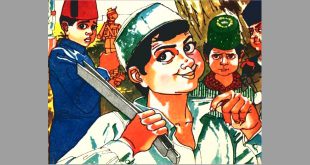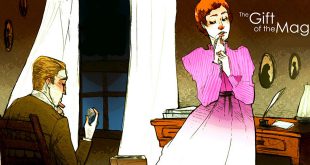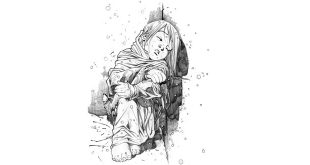First Thanksgiving: After landing in Plymouth*, the Pilgrims had to struggle to survive through their first wretched and miserable winter in Massachusetts. When spring and summer came it was a welcome relief. They learned so many things that first year. They had planted and cared for their first fields of corn. They had found wild strawberries in the meadows, raspberries on the hillsides, and wild grapes in the woods. In the forest just back of the village wild turkeys and deer were easily shot. In the shallow waters of the bay there was plenty of fish, clams, and lobsters. The summer had been warm, with a good deal of rain and much sunshine; and so when autumn came there was a fine crop of corn. They wanted to celebrate and give thanks to God for all he had provided for them.
First Thanksgiving: Children’s Thanksgiving story

“Let us gather the fruits of our first labors and rejoice together,” said Governor Bradford.
“Yes,” said Elder Brewster, “let us take a day upon which we may thank God for all our blessings, and invite our Indian friends who have been so kind to us.”
The great Indian chief, Massasoit, came with ninety of his bravest warriors, all dressed in deerskins, feathers, and foxtails, with their faces smeared with red, white, and yellow paint.
Now there were only eleven buildings in the whole village, four log storehouses and seven little log houses; so the Indian guests ate and slept outside. This was no problem though, for it was one of those warm weeks in the season we call Indian summer.
To supply meat for the occasion four men had already been sent out to hunt wild turkeys. They killed enough in one day to last the whole company almost a week. Massasoit helped the feast along by sending some of his best hunters into the woods. They killed five deer, which they gave to their paleface friends, that all might have enough to eat.
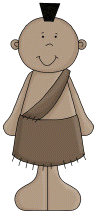 Under the trees were built long, simple tables on which were piled baked clams, broiled fish, roast turkey, and deer meat.The young Pilgrim women helped serve the food to the hungry Indians. One was Mary Chilton, who leaped from the boat at Plymouth Rock; the other was Mary Allerton. She lived for seventy-eight years after this first Thanksgiving, and of those who came over in the Mayflower she was the last to die.
Under the trees were built long, simple tables on which were piled baked clams, broiled fish, roast turkey, and deer meat.The young Pilgrim women helped serve the food to the hungry Indians. One was Mary Chilton, who leaped from the boat at Plymouth Rock; the other was Mary Allerton. She lived for seventy-eight years after this first Thanksgiving, and of those who came over in the Mayflower she was the last to die.
What a merry time everybody had during that week! Young John Howland was there. While they were sailing in mid ocean, he fell overboard but was quick enough to catch hold of a trailing rope. Perhaps after dinner he invited Elizabeth Tilley, whom he afterward married, to sail over to Clarke’s Island and return by moonlight.
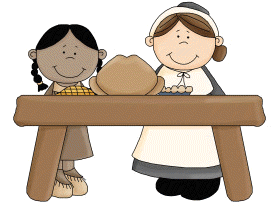 With them, it may be, went John Alden and Priscilla Mullins, whose love story is so sweetly told by Longfellow.
With them, it may be, went John Alden and Priscilla Mullins, whose love story is so sweetly told by Longfellow.
One proud mother, we may be sure, showed her bright-eyed boy, Peregrine White, who was the first baby born in Plymouth.
And so the fun went on. In the daytime the young men ran races, played games, and had a shooting match. Every night the Indians sang and danced for their friends; and to make things still more lively they gave every now and then a shrill war whoop that made the woods echo in the still night air.
Plymouth:
Plymouth (historically known as Plimouth and Plimoth) is a town in Plymouth County, Massachusetts. The town holds a place of great prominence in American history, folklore, and culture, and is known as “America’s Hometown.” Plymouth was the site of the colony founded in 1620 by the Mayflower Pilgrims, where New England was first established. It is the oldest municipality in New England and one of the oldest in the United States. The town has served as the location of several prominent events, one of the more notable being the First Thanksgiving feast. Plymouth served as the capital of Plymouth Colony from its founding in 1620 until the colony’s merger with the Massachusetts Bay Colony in 1691. The English explorer John Smith named the area Plymouth (after the city in South West England) and the region ‘New England’ during his voyage of 1614 (the accompanying map was published in 1616). It was a later coincidence that, after an aborted attempt to make the 1620 trans-Atlantic crossing from Southampton, the “Mayflower” finally set sail for America from Plymouth, England.
 Kids Portal For Parents India Kids Network
Kids Portal For Parents India Kids Network


